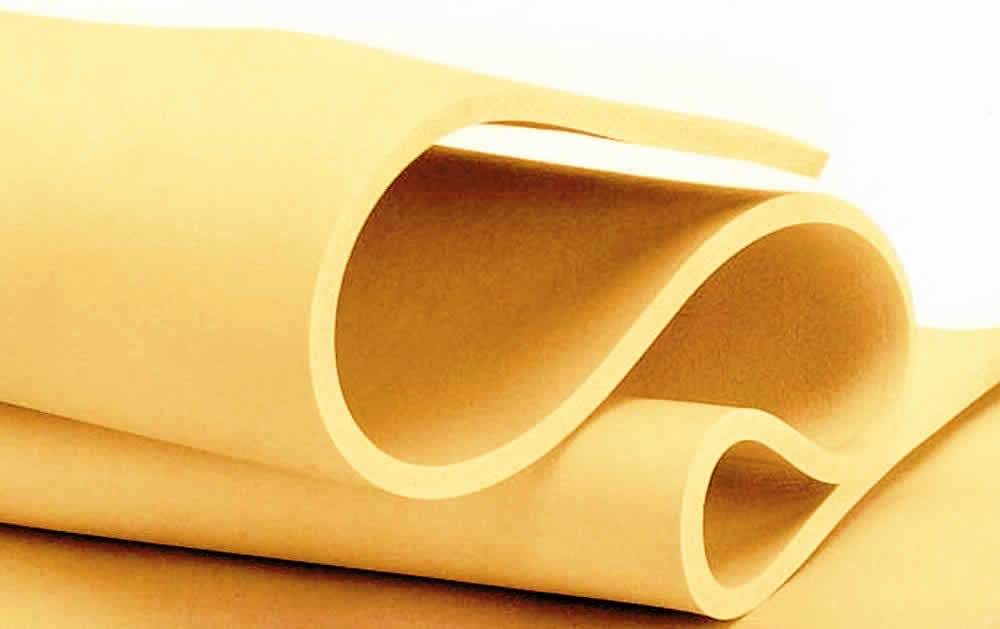Краткие сведения
Подробное описание товара
Composition and Properties
The composition of latex differs from plant to plant. Most natural rubber comes from a single species of tree, Hevea brasiliensis.
- Crude rubber is a tough and an elastic solid. It becomes soft and sticky as the temperature rises.
- Its specific gravity is 0.915.
- The most important property of natural rubber is its elasticity. When stretched, it expands and attains its original state, when released. This is due to its coil-like structure. The molecules straighten out when stretched and when released, they coil up again. Therefore applying a stress can easily deform rubber. Note that when this stress is removed, it retains its original shape.
- Raw natural rubber has elasticity over a narrow range of temperature from 10 to 60 degrees centigrade. Because of this, articles made of raw natural rubber don't work well in hot weather.
- Raw natural rubber has low tensile strength and abrasion resistant.
- It absorbs large quantities of water.
- It is insoluble in water, alcohol, acetone, dilute acids and alkalis.
- It is soluble in ether, carbon disulphide, carbon tetrachloride, petrol and turpentine.
- Pure rubber is a transparent, amorphous solid, which on stretching or prolonged cooling becomes crystalline.
Usage
Natural rubber is used by many manufacturing companies for the production of rubber products. Currently, rubber is harvested mainly in the form of the latex from the para rubber tree or others. The latex is a sticky, milky colloid drawn off by making incisions into the bark and collecting the fluid in vessels in a process called "tapping". The latex then is refined into rubber ready for commercial processing.
Natural rubber is used extensively in many applications and products, either alone or in combination with other materials. In major areas latex is allowed to coagulate in the collection cup. The coagulated lumps are collected and processed into dry forms for marketing. In most of its useful forms, it has a large stretch ratio and high resilience, and is extremely waterproof.
- Compared to vulcanized rubber, uncured rubber has relatively few uses. It is used for cements for adhesive, insulating, and friction tapes and for crepe rubber used in insulating blankets and footwear. Vulcanized rubber, on the other hand, has numerous applications. Resistance to abrasion makes softer kinds of rubber valuable for the treads of vehicle tires and conveyor belts, and makes hard rubber valuable for pump housings and piping used in the handling of abrasive sludge.
- The flexibility of rubber is often used in hoses, tires, and rollers for a wide variety of devices ranging from domestic clothes wringers to printing presses its elasticity makes it suitable for various kinds of shock absorbers and for specialized machinery mountings designed to reduce vibration. Being relatively impermeable to gases, rubber is useful in the manufacture of articles such as air hoses, balloons, balls, and cushions. The resistance of rubber to water and to the action of most fluid chemicals has led to its use in rainwear, diving gear, and chemical and medicinal tubing, and as a lining for storage tanks, processing equipment, and railroad tank cars. Because of their electrical resistance, soft rubber goods are used as insulation and for protective gloves, shoes, and blankets hard rubber is used for articles such as telephone housings, parts for radio sets, meters, and other electrical instruments. The coefficient of friction of rubber, which is high on dry surfaces and low on wet surfaces, leads to the use of rubber both for power-transmission belting and for water-lubricated bearings in deep-well pumps.
Verities
The major commercial source of natural rubber latex is the Pará rubber tree (Hevea brasiliensis), a member of the spurge family, Euphorbiaceae. This species is widely used because it grows well under cultivation and a properly managed tree responds to wounding by producing more latex for several years.
- Congo rubber, formerly a major source of rubber, came from vines in the genus Landolphia (L. kirkii, L. heudelotis, and L. owariensis). These cannot be cultivated, and the intense drive to collect latex from wild plants was responsible for many of the atrocities committed under the Congo Free State.
- Many other plants produce forms of latex rich in isoprene polymers, though not all produce usable forms of polymer as easily as the Pará rubber tree does some of them require more elaborate processing to produce anything like usable rubber, and most are more difficult to tap.
- Some produce other desirable materials, for example gutta-percha (Palaquium gutta) and chicle from Manilkara species. Others that have been commercially exploited, or at least have shown promise as sources of rubber, include the rubber fig (Ficus elastica), Panama rubber tree (Castilla elastica), various spurges (Euphorbia spp.), lettuce (Lactuca species), the related Scorzonera tau-saghyz, various Taraxacum species, including common dandelion (Taraxacum officinale) and Russian dandelion (Taraxacum kok-saghyz), and perhaps most importantly for its hypoallergenic properties, guayule (Parthenium argentatum). The term gum rubber is sometimes applied to the tree-obtained version of natural rubber in order to distinguish it from the synthetic version.
нет данных о компании
Пожалуйста авторизируйтесь чтобы написать отзыв
Отзывы клиентов
- Отзывов пока нет








